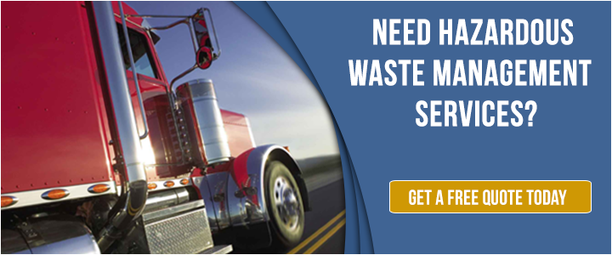Automobile industries, chemical plants, manufacturing companies, electroplating firms, medicals centers, and other entities generate a wide variety of hazardous materials-- inflammable, toxic, corrosive explosive, radioactive, and eco-toxic materials--that constitute hazardous waste. Environmental Protection Agency (EPA) Hazardous Waste Listings has four categories: F listed hazardous wastes, K listed hazardous wastes, P and U listed hazarodus wastes. The identification and listing of hazardous waste depends on the manner in which a particular manufacturing or industrial operation creates the waste.
This article discusses the F listed hazardous wastes--materials generated from nonspecific sources, manufacturing or industrial processes that generate waste during the fabrication of parts, products or other objects, from among different industrial sectors. F listing hazardous wastes are commonly referred to as “manufacturing process wastes,” and can be divided into seven categories.
1. Spent Solvent Wastes – Coded as F001-F005, spent solvent wastes describe waste streams that result from the use of organic solvents. The Environmental Protection Agency (EPA) does not have a specific definition for “Spent Solvent”, but does discuss the term. Following EPA guidelines, the term “spent “means that the material has been used for its intended purpose, and cannot be used again unless it undergoes some type of reprocessing. The term “solvent” describes chemicals that are used to “solubilize or mobilize constituents.” Companies across a wide range of industries regularly used solvents in their operations, including dry cleaners, mechanical repair shops, research facilities (scintillation counting), and electronic manufacturers.
2. Wastes from Electroplating and Other Metal-Finishing Operations—Industries employ electroplating and other techniques to modify the surface of metals parts or products to make them create some other desirable characteristic, such as corrosion-resistant, electrical conductivity and resistance, hardness, etc. In addition, metal finishing can also enhance the appearance of an object. These processes produce a variety of hazardous wastes, which are coded F006-F012, and F019, including the following byproducts:
- Wastewaters/ Rinsewaters
- Spent plating
- Spent bath sludges
- Spent anodes
- Spent filters
- Dust from grinding and/or polishing operations
- Spent acids or bases
- Spent or used stripping bath solutions
- Etching solution wastes
- Spent solvents and/or paints
- Chemicals that are off-specification
- Chemicals that have exceeded their shelf life
- Spill residue like kitty litter, soils, liquids, etc
- Maintenance tools like mops, brushes or brooms
- Used Oil
- Discarded Personal Protective Equipment
- Waste paint-related materials/ solvents used for cleaning
- Spent batteries
- Spent fluorescent lamps
The type of companies that require plating and metal finishing process range from jewelry shops to automobile makers and original equipment manufacturers.
3. Dioxin-Bearing Wastes – The EPA counts dioxins (coded F020-F023 and F026-F028), among the most-dangerous known chemical compounds. Dioxin generation occurs mostly from the processes used to make certain pesticides or the chemicals used in pesticide production. The F027 waste designation is unique because it represents the sole F or K listed waste that has not been “used” for its intended purpose. It describes an unused chemical, instead of an industrial waste stream. With the possible exception of F028, dioxin waste are considered to be extremely hazardous and are subjected to more stringent regulatory standards.
4. Wastes from the Production of Certain Chlorinated Aliphatic Hydrocarbons – This type of F list wastes come from a narrow industrial group--companies that manufacture chlorinated aliphatic hydrocarbons--an organic chemical compound. The K list contains numerous other wastestreams that are produced from organic chemicals.
5. Wood Preserving Wastes – Many types of wood used in the construction industry or for non-fuel applications require chemical treatment in order to resist insects and decay. The F032, F034, and F035 listings cover waste that result from wood preservation processes. Examples would include railroad ties, utility poles, and other wood products treated to withstand the extreme temperature range required for exterior use.
6. Petroleum Refinery Wastewater Treatment Sludges – Petroleum refinement operations generate significant quantities of contaminated wastewater--coded F037 and F038. The wastewater must be treated to remove a variety of contaminants, including soil, solid materials, and chemical toxins. Less dense material gravitate to the top and form a material called “float.” Solid materials and heavy pollutants will sink to the bottom and make a material known as “sludge.”
7. Multisource Leachate – The final category of F list wastes is coded F039 and covers multisource leachate, which consists of liquid material that collects at the bottom of a hazardous waste landfill. Rainwater and other liquids filter through soil and buried wastes in landfills. According to the EPA, the liquid of “leachate” carries the leached chemical pollutants deeper into the ground, and deposit the material in other locations in the subsurface or even ground water. This leachate infiltrate through landfills. Landfills, especially hazardous waste landfills contains high concentrations of chemicals.
The information presented here provides a general overview of the F Listed Hazardous Wastes. The universe of hazardous waste is significant. If you have questions about your hazardous waste generation, contact the EPA in your state or a hazardous waste disposal company.


Comment